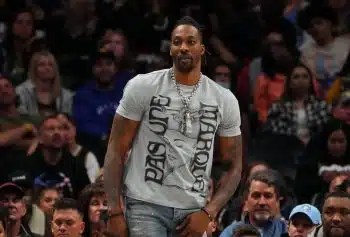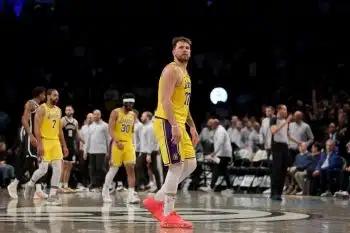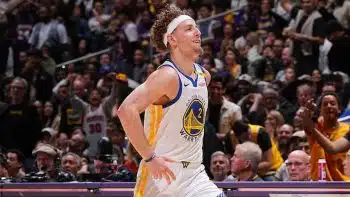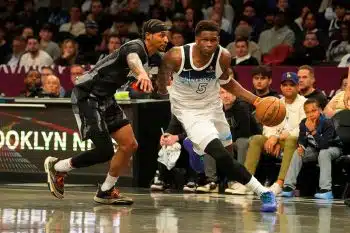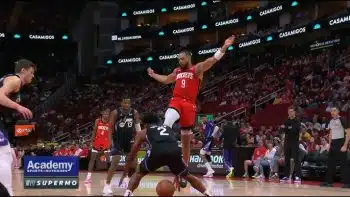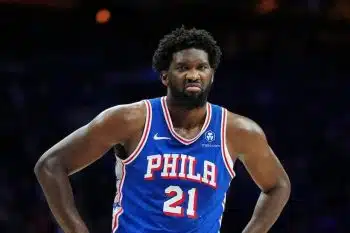NBA
Analyzing How Westbook, Harden Dominate
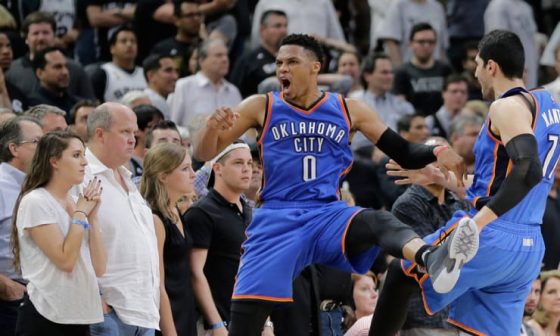
Russell Westbrook and James Harden are each playing excellent basketball and filling the stat sheet this season. Westbrook is averaging a triple-double with 31.2 points, 11.3 assists and 10.5 rebounds per game; Harden has posted averages of 28.7 points, 11.9 assists and 7.2 rebounds per game.
Harden ranks first in the NBA in assists and fourth in scoring, while Westbrook is second in the league in both scoring and assists. Westbrook is leading the league in triple-doubles with eight, while Harden is tied with LeBron James for second-most with three this season.
The great Oscar Robertson is the only NBA player to ever average a triple double over the course of an entire NBA season. During the 1961-62 season, Robertson made history when he posted 30.8 points, 12.5 rebounds and 11.4 assists per game. The Big O has obviously set the standard for the triple-double. However, Harden and Westbrook are on a historic tear too.
Westbrook became the first player in NBA history to average at least 32 points, 9.5 rebounds and 10.5 assists through the first 17 games of a season and the only player other than Robertson to average a triple-double this late into an NBA season. Harden posted back-to-back 30-point, 15-assist performances with 41 points and 15 assists against the Cleveland Cavaliers and 30 points and 15 assists against the New York Knicks. This was the first time since Magic Johnson, 30 years ago, that a player posted 30 points and 15 assists on consecutive nights. In addition, on November 9, Harden became the first non-San-Antonio-Spurs player to record a triple-double in the AT&T Center.
Both players are on some other type of flow right now, and it will be interesting to see if they can maintain this high level of play throughout the rest of the season. Despite the similar statistical outputs, there are subtle and not-so-subtle differences in the way Westbrook and Harden are generating such high-level performances night in and night out. Let’s look at how these players are producing these insane averages and break down the dichotomy in their styles of play.
Russell Westbrook, Thunder – 31.2 PPG, 11.3 APG and 10.5 RPG
Transition (Edge: Westbrook) – One of the biggest advantages Westbrook possesses is that he excels in transition. Approximately 20 percent of his total offense is generated with him pushing the ball and looking to make plays in the open court, per Synergy. He has scored 121 points in transition versus 482 points in the halfcourt, according to Synergy. Westbrook, unlike Harden, relies heavily on transition for his production. Conversely, Harden’s transition play only makes up 15 percent of his total offense (93 transition points), per Synergy.
For Westbrook, halfcourt offense makes up the other 80 percent of his total offensive output. In the halfcourt, the lion’s share (37.4 percent) of Westbrook’s production is generated through pick-and-roll situations. The Thunder guard has scored 204 of his total 561 points this season in PNRs, which ranks him in the 71st percentile in the league, per Synergy. In PNRs, Westbrook is averaging .96 points per possession.
Isolation (Edge: Westbrook) – Westbrook’s explosive first step allows him to get to virtually any spot on the floor, and his 86 points in isolation situations reflects this. Interestingly, Westbrook and Harden have been equally efficient moving without the ball. The two players’ points per possession when coming off of screens is 1.625, but this type of play makes up less than two percent of their play types, per Synergy.
Post-ups (Edge: Westbrook) – Westbrook also posts up more than Harden. Post-ups make up 6.9 percent (41 points) of Westbrook’s total offensive plays, whereas they make up only 2.1 percent (seven points) of Harden’s total points, according to Synergy.
Rebounding (Edge: Westbrook) – Finally, Westbrook has grabbed 178 total rebounds – 140 on the defensive end of the court and 38 on the offensive glass. Meanwhile, Harden has 126 total rebounds, with 102 coming on the defensive end and 24 on the offensive end. Westbrook also has a nominal edge in offensive rebounding put-backs, with a total of 19 points generated off of these plays compared to Harden’s 14 points in similar situations, per Synergy.
James Harden, Rockets – 28.7 PPG, 11.9 APG and 7.2 RPG
Pick and Roll (Edge: Harden) – Unlike Westbrook, Harden relies less on his transition play and more on pick-and-rolls to create his offense. For Harden, 84.7 percent of his offensive production occurs in the halfcourt and only 14.7 percent in the full the court, per Synergy. In transition, Harden has scored 93 points, whereas in the halfcourt he has recorded 384 points. Leading the league in assists, Harden has obviously been highly efficient distributing the ball. Most of his assists occur in the halfcourt, where he finds spot-up shooters and pick-and pop-guys out of PNR action. His average points per possession plus possessions with assists is 1.417, which ranks him in the 96th percentile in the league; this dwarfs Westbrook’s 1.25 PPP+A, which ranks him in the 74th percentile, per Synergy.
Facilitating For Teammates (Edge: Harden) – On the season, Westbrook and Harden have an identical assist-to-turnover ratio of 2.1, which is solid. However, Harden is leading the league in assists, so give the edge to the Rockets guard when distributing the ball to teammates. He does a stellar job whether in pick-and-roll or simply breaking his man down off of the dribble; he routinely finds Trevor Ariza, Eric Gordon or Ryan Anderson for jumpers and Clint Capela, Montrezl Harrell or Nene for dump-offs, lobs and rolls to the basket. His poise off of PNR action is what seems to be setting him apart as the top distributor in the league up to this point. His decision-making when it comes to whether he should find a perimeter teammate, hit the roll guy or score himself is allowing Harden to remain ahead of Westbrook when it comes to assists per game. As good as Westbrook is, at times he seems to lack the poise that Harden owns in facilitating for teammates out of PNRs.
Both players are having a career-year and have put themselves in the Most Valuable Player discussion thus far. It’ll be fun to continue watching these two as they lead their teams and chase history.
